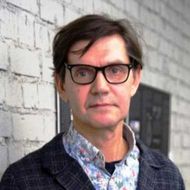- A
- A
- A
- ABC
- ABC
- ABC
- А
- А
- А
- А
- А
- HSE Campus in St. Petersburg
- School of Arts and Humanities
- Department of History
- News
- Round Table 'The Fall of the Berlin Wall: Past, Present, Future'
-
Department
-
Educational programmes
Address:
190068 Saint Petersburg
123 Griboedov channel, Room 123
Phone:+7 (812)786-92-49
Postal address:
190068 Saint Petersburg
123 Griboedov channel
The Department of History was created in 2012. The overarching goal of the department is systematic development of the field of global, comparative, and transnational history as a potent tool of overcoming the limitations of national history canon, fostering interdisciplinary dialogue in the field of social sciences and humanities, and brining new public relevance to historical knowledge. The department mission includes the development of new type of historical undergraduate and graduate education in Russia and pioneering new research fields in Russian historiography in dialogue with the global historical profession.
 Social History of the True Orthodox Christians Wandering in Russia. Capitalism, Communism, and Apocalypse, 1900-1930
Social History of the True Orthodox Christians Wandering in Russia. Capitalism, Communism, and Apocalypse, 1900-1930
In press
L.; NY: Routledge, 2025.
In press
Chukcheeva M.
Nineteenth-Century Art Worldwide. 2025.
In bk.: Women, Gender, and Technosciences, 1900–2020. A Beard to Govern. Routledge, 2025. Ch. 7. P. 123-140.
Khvalkov E., Levin F., Кузнецова А. Д.
Working Papers of Humanities. WP. Издательский дом НИУ ВШЭ, 2021

Round Table 'The Fall of the Berlin Wall: Past, Present, Future'
The round table ‘The Fall of the Berlin Wall: Past, Present and Future’ was organised with support from the Yeltsin Fund, the Yeltsin Presidential Centre, and the Russian representative office of the Konrad Adenauer Foundation (Germany).
The lecture was based on a research project with an analytical approach into the diaries of Teymuraz Stepanov-Mamaladze which previously were thought to have been lost. Stepanov-Mamaladze was personal assistant and speechwriter to the Minister of Foreign Affairs of the USSR at the time, Eduard Shevardnadze.
This unique source provides an opportunity to take a fresh look at the history of German reunification. Stepanov-Mamaladze was not a typical employee of the Ministry of Foreign Affairs and he observed the whole transformation of the changing foreign policy of perestroika like an anthropologist in the field.
Stepanov-Mamaladze writes about all the stages of the ‘peaceful revolution’ in the GDR: the fall of the Wall, the ‘4 + 2’ negotiations to decide on the military and political status of a new united Germany. A new united Europe was taking shape before his very eyes while the symbol of the soviet victory over fascism in WWII came crashing down.

